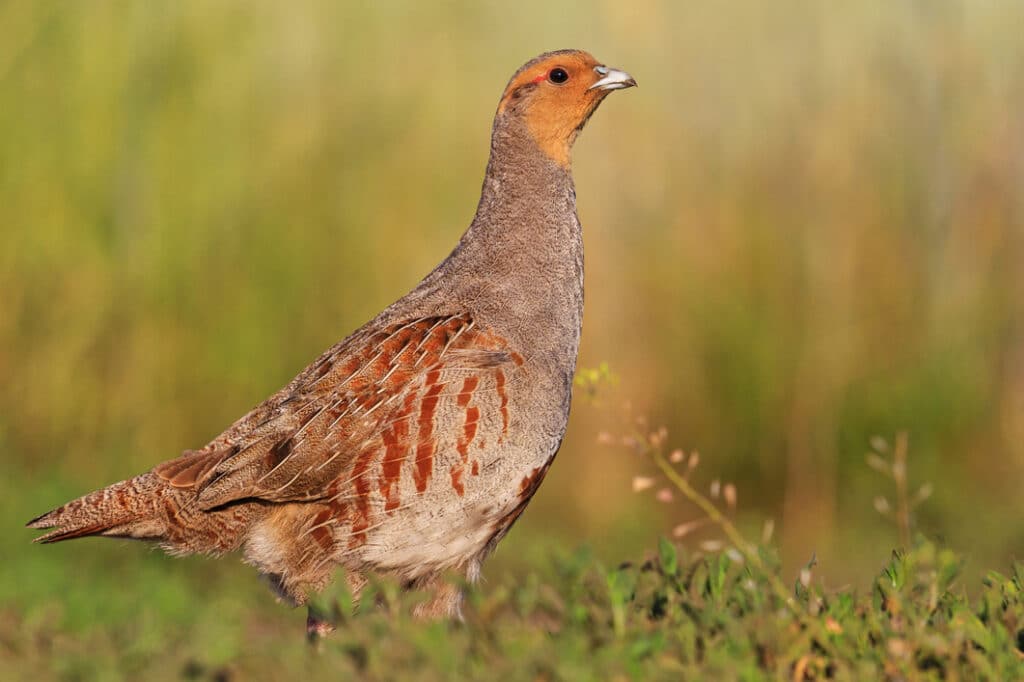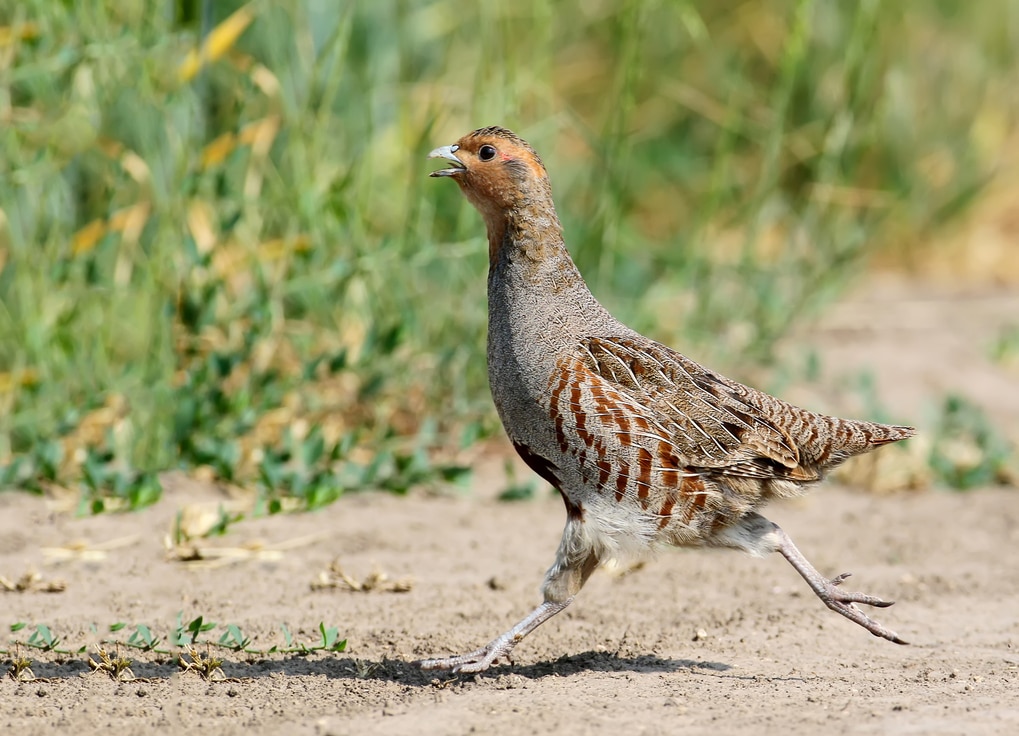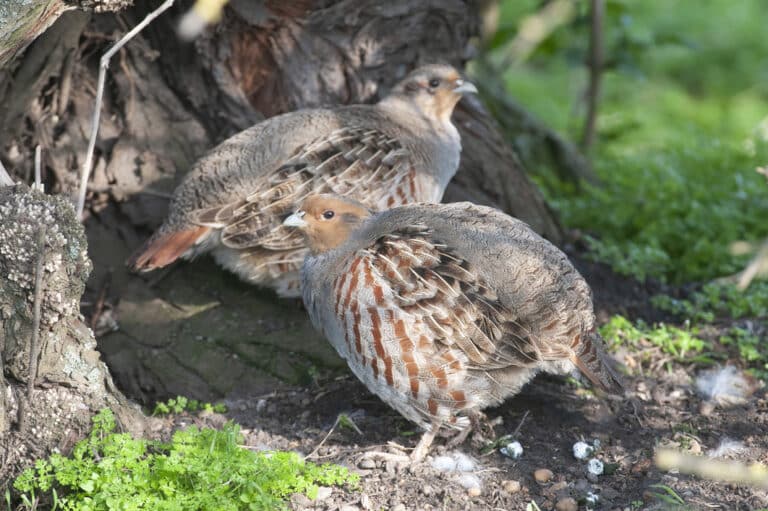Facts about Grey Partridge
Scientific name: Perdix perdix
Bird Family: Pheasants and partridges
UK conservation status: Red
At a glance
- UK resident, long-term breeding population decline.
- Rapid population crashes over such large areas point clearly to large-scale rather than local problems.
- Despite Red-listing in 2021, Grey Partridge can still be legally shot in England, Scotland and Wales between August and December.

Many people living in the UK now won’t know very much about the Grey (or English) Partridge (even if they sing about the species living in a pear tree – which it doesn’t – every Christmas), but it was once an everyday sight for anyone living or working in the countryside. Not any more sadly. The species has suffered enormous population declines and is now less common than the entirely introduced non-native Red-legged Partridge which survives here only because of annual releases for shooting.

Traditionally found in lowland arable areas from the chalk areas in the south, into East Anglia, Lincolnshire and Nottinghamshire, reaching into the north of England and the East of Scotland, the British Trust for Ornithology (BTO)’s Breeding Bird Survey documented a decline of 91% in the UK’s Grey Partridge population between 1967 and 2010. The European Breeding Bird Atlas 2 published in 2020 showed a similar 94% decline across Europe since 1980.
Rapid population crashes like these over such large areas point clearly to large-scale rather than local problems, and intensive agriculture and the dousing of the countryside in pesticides has been identified as the issue. The BTO states that, “There is convincing evidence showing that a steep drop in chick survival rate as a result of decreasing chick food availability due to agricultural intensification is the primary driver of population declines”. It’s widely understood now that as well as huge changes in habitat, increases in pesticide use has meant far fewer invertebrates are available for partridge chicks (a situation that has similarly lead to the huge decline in urban House Sparrow populations across the UK).
All of this must mean, surely, that Grey Partridges are no longer shot for ‘sport’?
Not quite. Shooting has noticed the disappearance of the species of course, and the industry has tried to reintroduce Grey Partridges in an effort to rebuild numbers so that widescale shooting can start up again (while, incidentally, as always labelling the lack of predator control outside of shooting estates as a major contributor to its decline), but Greys are still being shot. Almost incredibly they are also dying on Red-legged Partridge shoots – killed ‘accidentally’ by shooters that can’t (or can’t be bothered) to identify what they’re pointing their gun at.
A jaw-dropping exchange in the comments section of a BirdGuides article in January 2021 which quoted research by Dr Francis Buner, of the Game & Wildlife Conservation Trust (GWCT), proves the point. Asked whether the massive releases of Common Pheasant and Red-legged Partridge for shooting were having any measurable impact on Greys, Dr Buner himself replied that “Yes, large-scale releasing of red-legs are usually the end of any wild grey population…because they are accidentally shot out by the guns who are unable to tell the difference”.
So much for shooters portraying themselves as conservationists, It also reinforces the argument that the loaded and horrible term ‘gamebird’ has led to a complacent and lazy attitude amongst so-called ‘sportsmen’ where if they’re all available to be shot then does it really matter which species of bird they’re actually shooting at.

